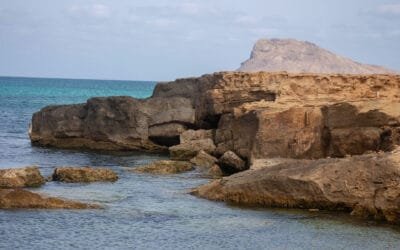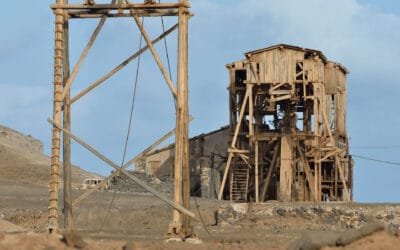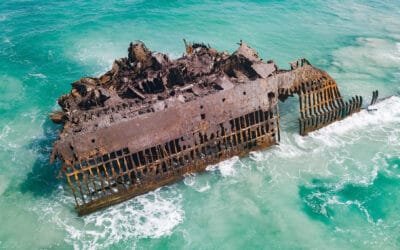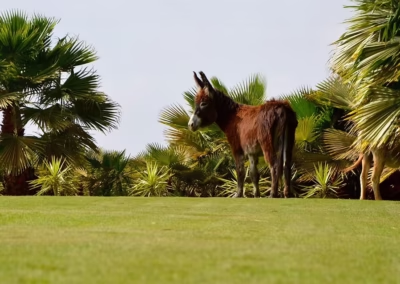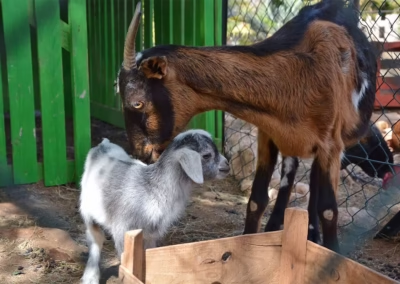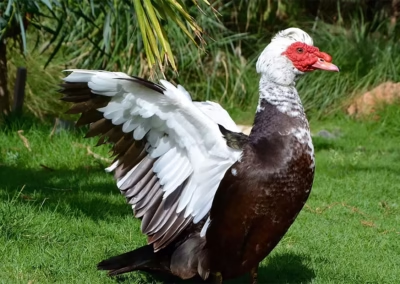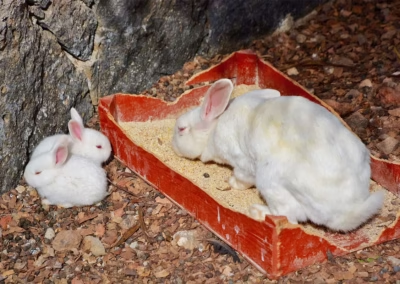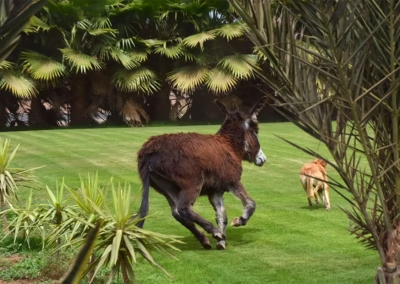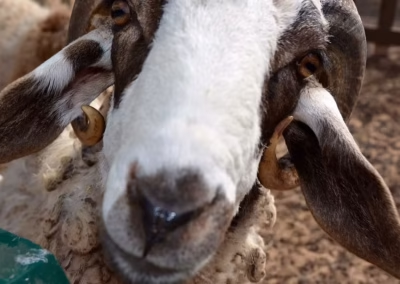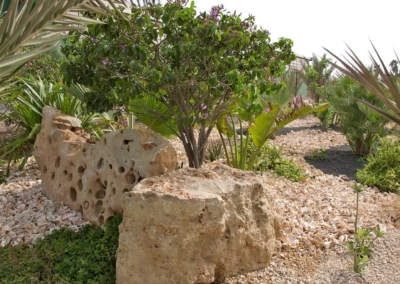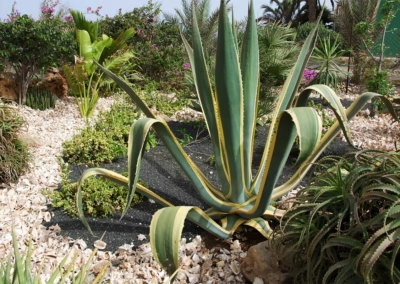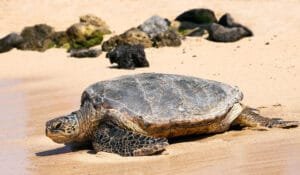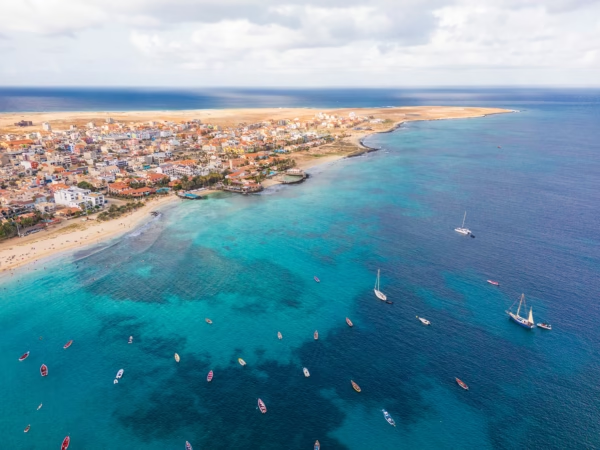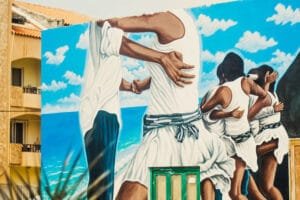Pachamama Eco Park: Beautiful Oasis in the Desert Island
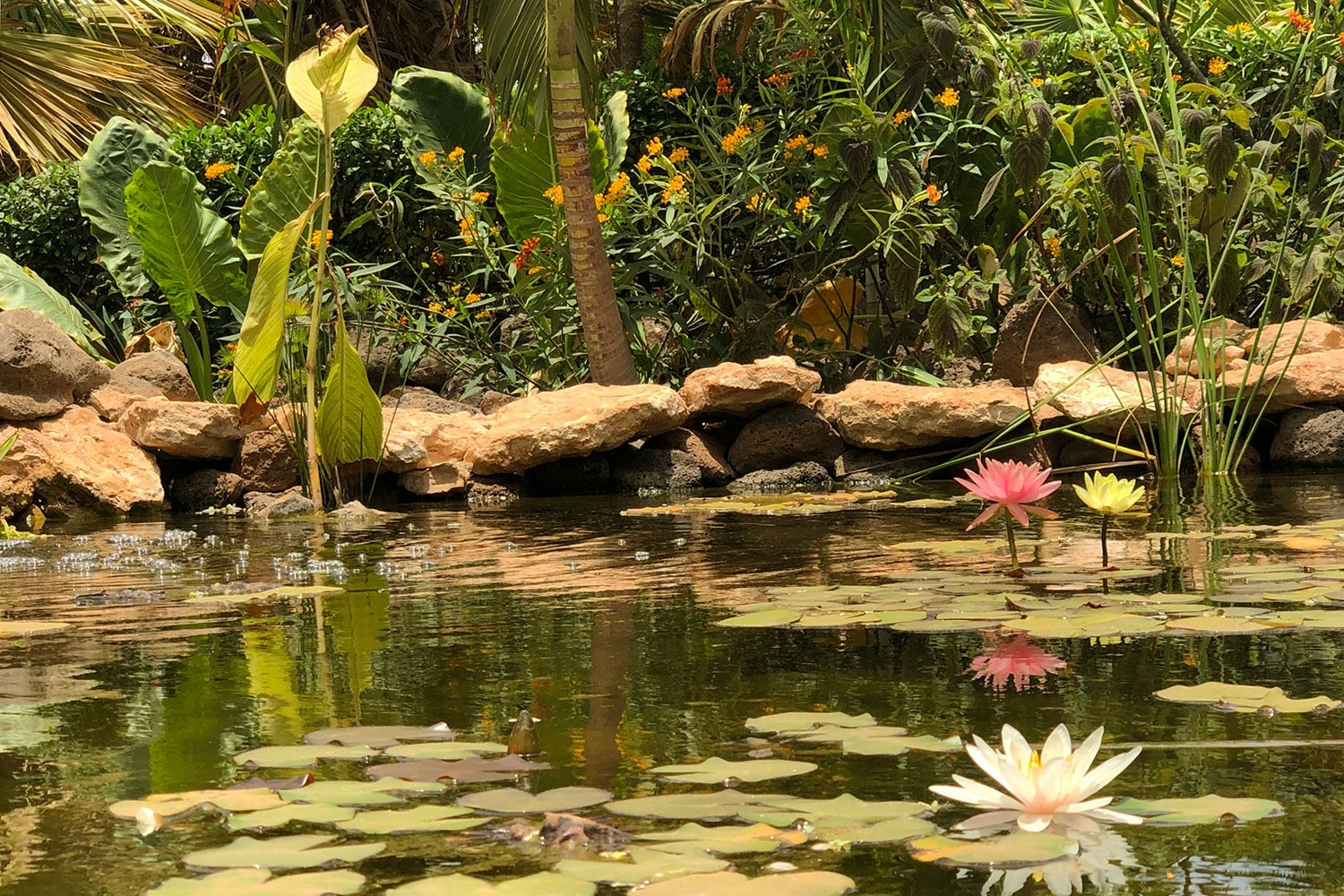
Pachamama Eco Park serves as a great example of successful adaptation to extreme environmental conditions. We can admire its innovative water management, strategic species selection, and integration of conservation with sustainable tourism. Its existence and continuous operation serve as an excellent demonstration that ecological restoration projects can thrive even in some of the world’s most challenging climates.
Pachamama Eco Park – Viviero Botanical Garden & Zoo di Terra
On Sal Island, one of Cape Verde’s driest landmasses, a 15-hectare botanical garden and animal sanctuary operates in defiance of the harsh climate. Pachamama Eco Park, also known as Viviero Botanical Garden & Zoo, has transformed barren desert land north of Santa Maria into a thriving ecosystem that houses over 150 plant species and dozens of rescued animals.
The park’s existence challenges assumptions about what’s possible in extreme environments. Sal has minimal rainfall and faces constant Atlantic salty winds, yet the facility maintains lush gardens, animal enclosures, and Cape Verde’s only grass golf course.
Visitor Experience and Practical Information
The park operates daily from 10:00 to 18:00, with a recommended visit duration of 1-2 hours and entrance fees of €5 per person. The facility features shaded seating areas, walking paths through various garden sections, and a café offering local beverages, including baobab juice.
- Location: Zona da Fátima, Santa Maria (Google Maps)
- Telephone: +238 986 60 31
- Email: pachamamasal@gmail.com
- Website: pachamamaecopark.com
You can get there by: walking from Santa Maria (approximately 40 minutes, take water!), taking a shared minibus service, or by taxi. Many visitors coordinate transportation with drivers due to limited public transport schedules.
The park caters to a diverse range of visitor interests, with families and children particularly enjoying animal interactions and educational opportunities. Adults can appreciate the fascinating selection of botanical collections, which feature plants that can survive in the dry, salty weather of Sal. To all the older and young, the park’s peaceful environment offers a great escape from the intense sun and beach crowds.
Planning the Visit to Pachamama Eco Park
Peak visiting hours in Pachamama Eco Park occur mid-morning and late afternoon when temperatures are more moderate. The park provides lots of shade. However, please keep in mind that sun protection remains essential throughout the year.
Photography is encouraged throughout the facility. The contrast between lush gardens and the surrounding desert landscape creates striking visual opportunities.
I recommend choosing comfortable walking shoes due to the presence of gravel paths and uneven terrain in certain areas. The café offers refreshments, but bringing your own water is advisable.
When planning your visit, allow extra time for transportation arrangements, especially for the return trip to Santa Maria. Many visitors combine park visits with other island attractions, such as exploring Espargos, floating in the Pedra de Lume salt flats, or seeing the famous Buracona’s “Blue Eye.”
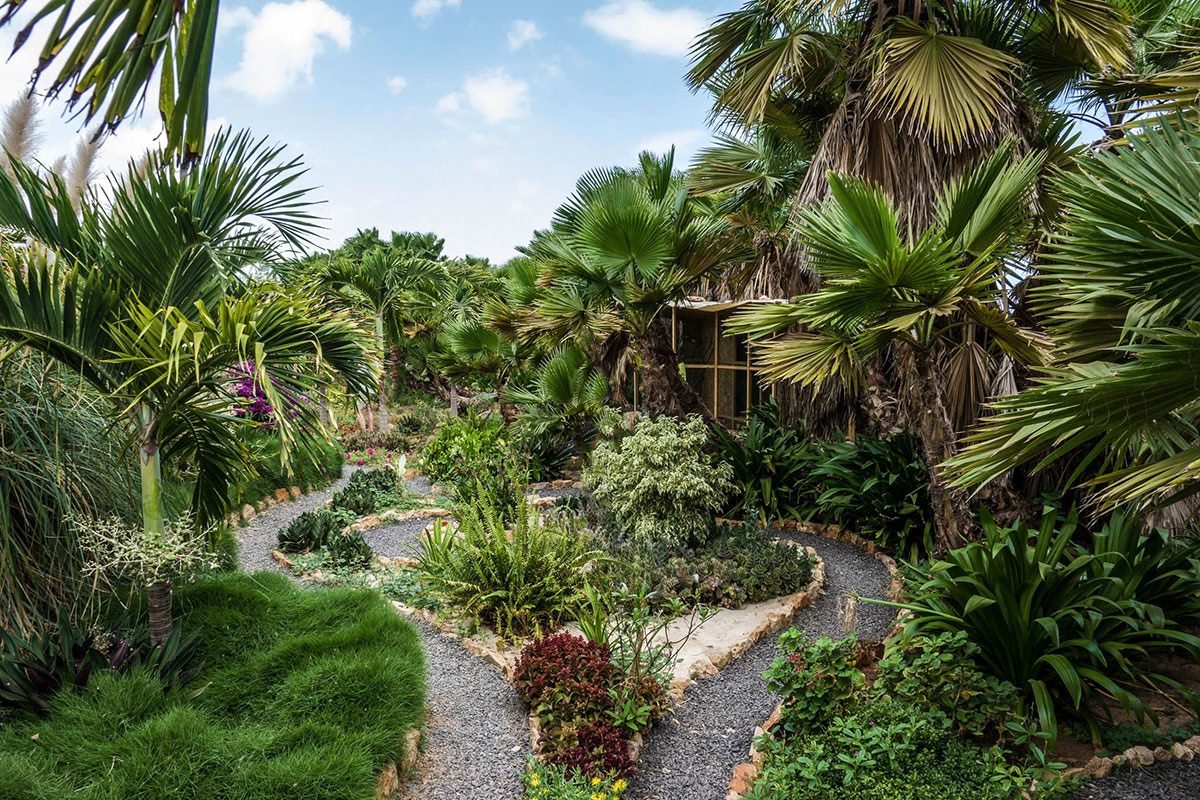
Pachamama Eco Park Plant Collection
The park cultivates over 150 plant species using drop-by-drop irrigation and recycled water. The collection primarily features native Cape Verdean flora, along with some species from other regions that have adapted to similar climatic conditions.
The botanical layout features themed sections that represent various ecosystems. Visitors encounter cacti and succulent gardens, palm groves featuring over 5,000 individually planted trees, and vibrant displays of flowering plants that showcase water-efficient cultivation techniques.
Plant selection prioritises species that can withstand high salinity levels in both soil and air. The collection serves multiple purposes, including tourism, education, and — most importantly — the preservation of regional botanical knowledge that might otherwise be lost due to the pressures of climate change.
Animal Sanctuary Operations
The park functions as a rescue centre for animals from across the Cape Verde islands. Current residents include parakeets, peacocks, ducks, donkeys, monkeys, goats and turtles, with many animals having been rescued and now living in this safe sanctuary.
Animal welfare considerations shape facility design and operations. Enclosures provide shade and ventilation suitable for the climate, while many species, such as peacocks and chickens, roam freely across the grounds. The park prohibits visitors from feeding animals but allows supervised interaction with particular species, particularly the goats.
Staff members provide educational information about animal behaviour, conservation challenges, and the circumstances that led to each animal’s rescue. This approach connects tourism revenue with conservation education.
Conservation and Education Programs
The park collaborates with local educational institutions. A 2017 visit, sponsored by the Cape Verde Foundation, brought 170 students aged 9-11 to study biodiversity and animal classification. Programs like this are an investment in Sal’s future as they focus on environmental awareness and conservation practices relevant to island ecosystems.
Educational components include, among others:
- plant care demonstrations,
- animal behaviour observations,
- water conservation techniques.
The park’s recycling systems serve as great practical examples of sustainable resource management in water-scarce environments. Environmental awareness initiatives promote recycling and environmental care, positioning the garden as both a recreational space and educational resource.
Golf Course Engineering
The Viveiro Golf Course was designed by EIGCA member Pierfrancesco De Simone and required innovative engineering solutions to create playable conditions on Sal’s challenging terrain. The ground contained hard rocks that were difficult to excavate, leading to construction on existing levels using suitable materials found in limited areas of the site.
Sand transported from local quarries was amended with organic material to create a growing medium for grass. The course uses Rainbird irrigation systems installed by the grounds crew, with water sourced entirely from recycled hotel wastewater.
The 18-hole, par-72 layout stretches approximately 6,000 meters. Course design limits grass coverage to essential playing areas — greens and fairways — while incorporating Sal’s natural desert landscape throughout the property.
Water Management System
The island’s water scarcity drives much of the park’s operational approach. The facility processes wastewater from Santa Maria’s tourism sector. Then it treats and redistributes the water through precise irrigation systems, so that it is delivered directly to the plant’s root systems. This underground approach minimises evaporation losses while ensuring each plant receives appropriate hydration. Excess water circulation helps moderate soil temperature and provides humidity in an otherwise arid microclimate.
This closed-loop water system of Pachamama Eco Park is an excellent example of scalable techniques for sustainable agriculture in desert environments, with potential applications across Cape Verde and similar climatic zones.
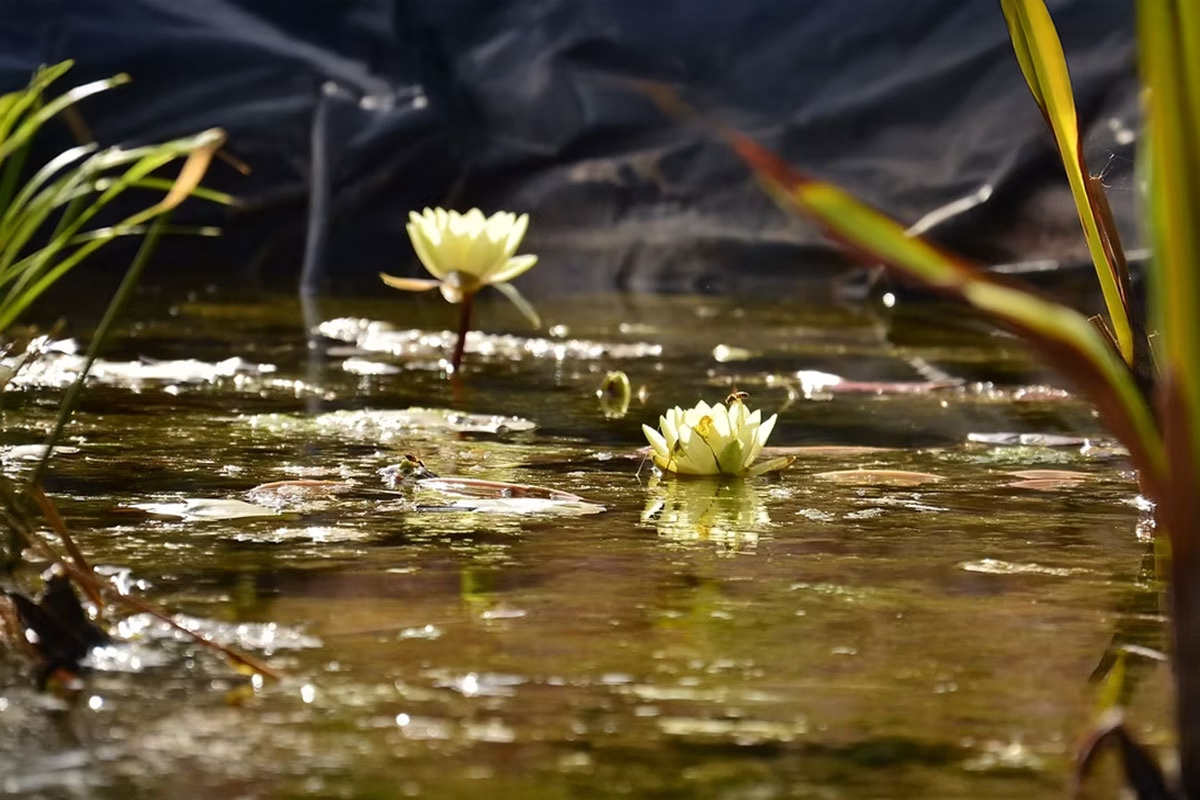
Pachamama Eco Park Origins and Development
Viviero began operations in 2007 as Viviero Botanical Garden plant nursery, initially focused on cultivating vegetation resistant to Sal’s arid conditions. The founders recognised that traditional farming approaches wouldn’t work on an island where freshwater is scarce and soil quality is poor.
The operation expanded gradually, adding rescued animals and developing into a whole botanical garden. Construction of an 18-hole golf course commenced in 2019, with the first nine holes opening to players in December 2021. The entire course was completed in March 2024.
The transformation required significant infrastructure investment. The park has installed sophisticated drip irrigation systems, allowing it to utilise recycled water from nearby hotels and resorts. This closed-loop approach addresses the problem of water scarcity while providing an excellent, sustainable foundation for plant cultivation.
Economic Impact and Employment
The golf course opening generated numerous new professions and job opportunities within the local community. The park employs local staff for maintenance, animal care, visitor services, and food service operations.
For over 20 years, the Viveiro nursery has grown and maintained plants that now adorn Santa Maria and some of the island’s most beautiful hotels. Such land development projects as Pachamama Eco Park can generate a steady income and actively support the broader tourism sector. The success of the park has encouraged similar conservation and sustainable tourism projects across Cape Verde. This fact demonstrates the economic viability of pro-ecological initiatives in challenging climatic conditions.
Operational Considerations
Operating in Sal’s extreme conditions comes with ongoing challenges. Not only do plants need constant attention. Due to the corrosive effects of salt air, equipment maintenance requires continuous attention. Plant diseases and pest management become much more complicated because the traditional treatments might damage the delicate ecosystem balance.
Animal welfare in high temperatures demands careful attention to shelter, hydration, and stress indicators. Some visitors express concerns about certain animals appearing stressed, although staff emphasise the rescue nature of the facility and the improved conditions compared to previous situations.
Water system maintenance requires technical expertise and backup planning for equipment failures. The park’s sustainability depends on goodwill and continued cooperation with the hotel sector, as they provide access to wastewater treatment facilities.
Pachamama Eco Park in Regional Context
Pachamama Eco Park effectively addresses the multiple regional needs of Sal Island and the entire Cape Verdean archipelago. Tourism diversification beyond beaches shows its economic importance. The importance of animal welfare teaches children empathy and how to properly care about living things. Environmental education and the demonstration of sustainable practices are an investment in the island’s sustainable future. The facility offers Cape Verde a model for conservation-based tourism that is not dependent solely on marine resources.
The park’s success provides evidence that environmental restoration projects can be successful even in very challenging climates when properly planned and executed. This is an excellent example of land development for other Atlantic island states that face similar environmental problems.
For Sal Island specifically, the park provides residents and visitors with access to biodiversity otherwise unavailable in the local ecosystem, supporting both education and quality of life.
Future Developments
It’s lovely to observe how Pachamama Eco Park continues to evolve. It constantly expands its plant collection and improves animal facilities. Golf course operations are still in development, with the potential to host tournaments and offer more services to visitors.
Educational program expansion could include partnerships with international conservation organisations and research institutions studying desert agriculture and animal rescue techniques.
The facility’s water management systems may serve as a model for other sustainable development projects across Cape Verde, particularly as climate change increases pressure on traditional water sources.
Bibliography and Sources
- Pachamama Eco Park official website: pachamamaecopark.com, and old website (pictures);
- Pachamama Eco Park’s official Facebook fan page and Instagram profile;
- Liebenswerte Oase in der kargen Insellandschaft (photo) by Ditterke, Viveiro, Botanical Garden & Zoo di Terra gallery on TripAdvisor;
